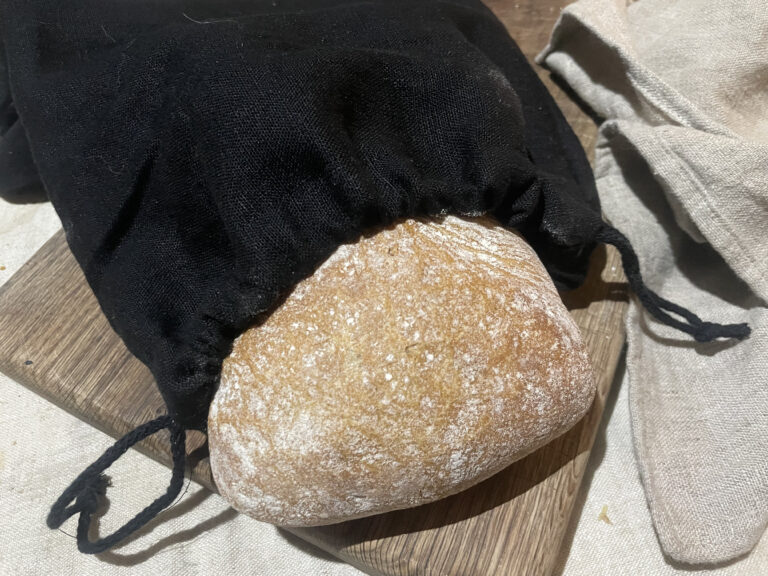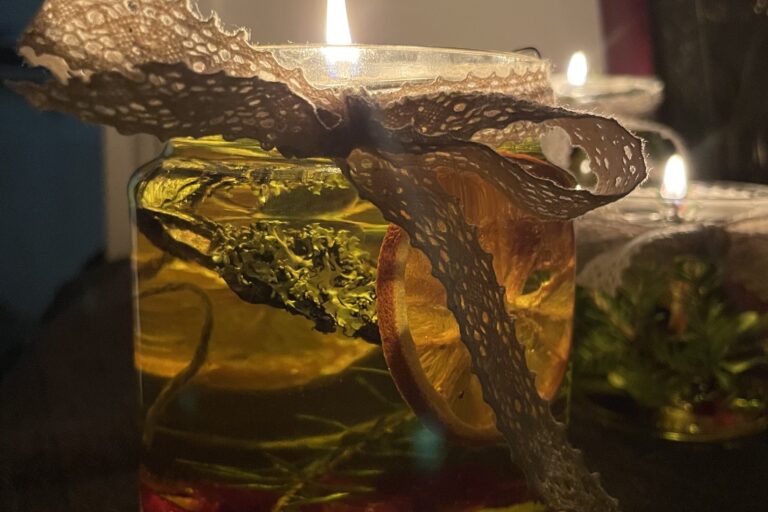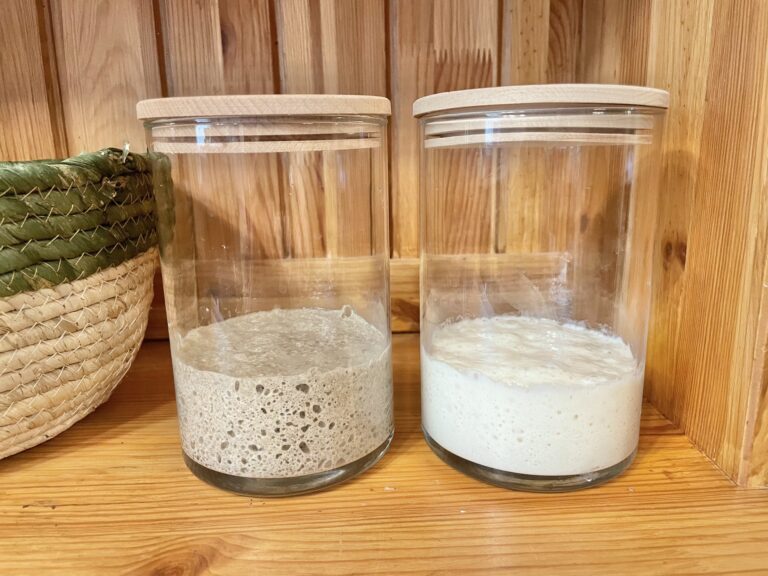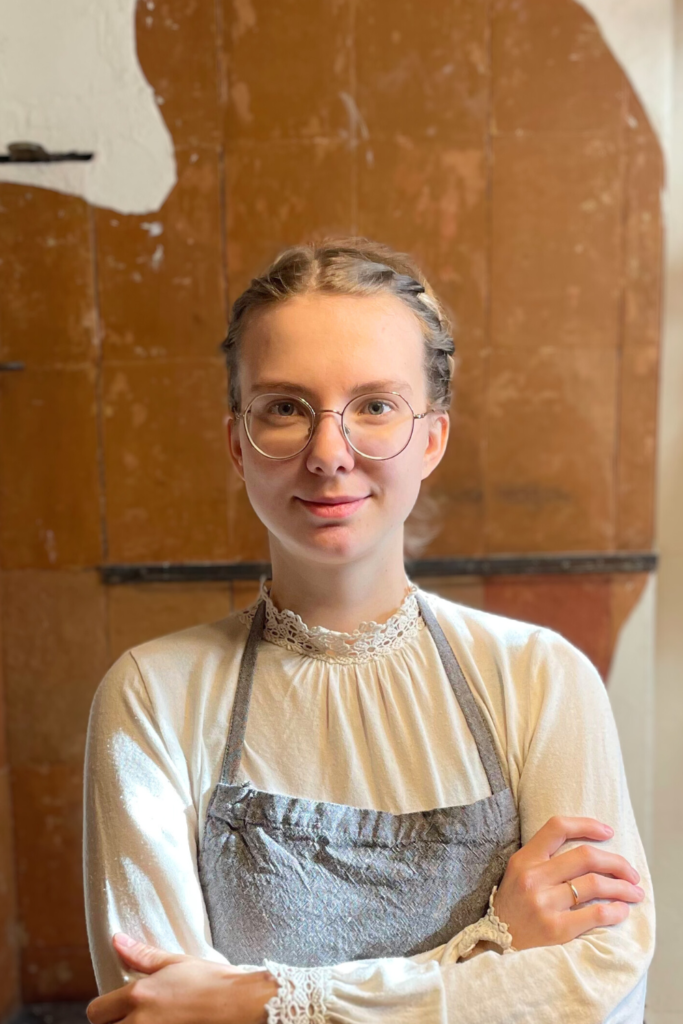After the birth of Nikolaus, all I wished for was that the past few days of my life would be forgotten forever. After a week had passed since the birth, I wanted to preserve and record those memories. It’s still a positive birth story and could be beneficial reading for first-time mothers. The birth process lasted roughly five days – a whole workweek – from Monday to Friday. The due date was November 9th, but our little man arrived at the end of October, at 38 weeks and 3 days.

Editing this text now, having gone through another birth, I can confidently say that as a second-time mom, this birth story would have been completely different. But everything has a “first time,” and I’m incredibly happy that I’ll never have to give birth for the first time again! Additionally, I want to emphasize that the following story is not a natural birth but rather an induced birth by breaking the waters. So, all sorts of unusual adventures can happen…
Before you start reading, come and follow me on Instagram, Facebook, and Pinterest!
The first signs of labor
On Monday, the first signs of more active Braxton Hicks contractions appeared. I had experienced Braxton Hicks contractions many times during my pregnancy, but on that day, they were slightly different: more regular and stronger. From Monday, there were three days of this “starting-not starting” feeling of labor; honestly, it was emotionally exhausting. We even went to the maternity ward for CTG on Tuesday, where they detected mild contractions with 8-minute intervals. I was dilated 1.5 cm, but since nothing was really happening, we went back home. On Wednesday, contractions were about 3-4 minutes apart, but still irregular. Throughout these days, there were long periods where I didn’t feel anything at all. Nevertheless, we decided to go to the hospital again. As a second-time mom, I definitely wouldn’t have gone to the hospital with such contractions, but this situation left me confused as a first-time mom. I was dilated 2-3 cm, indicating that something was slowly progressing. I stayed in the hospital, and that’s where the real action begins…
Testing positive for COVID-19
A day before, during a visit to the midwife, we had learned that only fathers vaccinated against coronavirus were allowed in the postnatal ward. Teodor wasn’t vaccinated, so this news truly saddened me. But eventually, I accepted it and shrugged my shoulders (what else could I do?). Now that we were in the maternity ward, they took a COVID-19 test from me and left me waiting for the results. The rule was that corona-positive pregnant women had to give birth without a support person, even if the support person didn’t have the illness, so Teodor wasn’t even tested. We were waiting for the test results: Teodor was extremely tired and sleeping in a bean bag chair. For some reason, this really bothered me, but I didn’t want to say anything. I felt that labor was slowing down once again, and it greatly affected my mood. So, there we were. An hour and a half later, two midwives in protective gear entered the labor room, and one of them asked, “Do you know that you have COVID?” Teodor got up, and I, on the other hand, sat down… What followed was a quick farewell, and I was left alone with the midwives. I tried to keep myself composed, but I couldn’t help but cry. I thought it couldn’t get any worse. They attached CTG to me and left me alone – I immediately called Teodor. He was quite upset, though he tried to keep it together. I was completely beside myself – I cried for at least an hour or two and couldn’t calm down. We opened a video call and kept it going all day. We both did our own things, but it felt like we were connected the whole time through the video call. The video call was quite nice, it lifted my spirits. Unfortunately, the labor kept fading away, and there were no signs of it by the evening. The midwife came to check on me and do the CTG every couple of hours.

Labor came to a halt
By the time evening came, I was taken to the COVID ward to make room in the labor room. It was already quite late, almost midnight. I was hit by a strong evening melancholy. I cried again, feeling more alone than ever before. The baby moved in my belly from time to time – he was more active than usual those days, but still very calm. I hadn’t eaten anything all day (because the hospital didn’t provide any), so I was also dealing with hunger. At some point, Teodor and I initiated the video call again, and we fell asleep with it running. It was a great support for me – I was like a little child who couldn’t fall asleep without “daddy” watching over me.
In the morning, around five o’clock, the midwife was supposed to come, but I had been forgotten. By eight o’clock, still no sign of her, and hunger was starting to get to me. So, I called a number I had been given since I wasn’t allowed to leave the room. By that moment, Teodor and I had decided that since there was no trace of the birthing process anymore and I was sad and confused, there is no point staying in the hospital. So, I requested to be allowed to go home, and the nurse on the phone agreed. My mood improved considerably.
Let’s get this birth going
After a couple of hours of waiting, the on-call gynecologist called and convinced me that a “COVID pregnancy” was dangerous and we should break my waters and induce labor. I discussed this with Teodor and our mothers and decided that if it was risky, then we should proceed with the induction. Looking back, although I always believe that everything happens for a reason, maybe this wasn’t the best decision. But it was a decision I made myself, with no one forcing me.
Now I was getting quite nervous. I paced back and forth in the room for an hour without sitting down. Then, I suddenly snapped out of it and realized I was just wasting my nerves. I sat on the edge of the bed and switched to a “calm mode.” I waited for about another hour. I was very calm, but anxiety was still creeping in. Initially, we had talked with Teodor about keeping a video call open during labor, but now both of us felt it might not be necessary. The midwife and gynecologist came into the room. Looking back at that moment, it’s as if some primal instinct took over, and I switched off all the instincts of a weak and fragile woman. I didn’t know what lay ahead of me… and it was probably better that way.
I am in labor
Breaking the water was quite unpleasant. It wasn’t painful, but very uncomfortable, and I closed my eyes. When the amniotic fluid started to come out (it was a few minutes before noon), I realized that there was no turning back, this was happening now. CTG was attached, and 2-3 minutes later, the first contraction came – it was a pretty significant pain. Ten minutes later, a new one arrived, and at that moment, I understood the true nature of pain. This pain was so sudden and intense that I literally screeched. The pain lasted about a minute, and at that moment, I remembered what my mother-in-law had recently told me – no matter how painful it was, eventually, there would be a chance to rest. Based on that thought, I endured the pain. In fact, I lived through the whole birth with that thought, as long as I was able to think, since by the end of the birth, I had become a wreck.
From here on, labor started to intensify. After two hours, contractions were 5 minutes apart and stayed that way for hours, and the pains became increasingly severe. I managed to stay in touch with Teodor for the first part and also talked to some friends and my mother. During contractions, I couldn’t do anything except breathe, but in between, it was relatively normal. Around 2 p.m., Teodor received my last phone call before the joyful official announcement of birth. I mustered all my strength to make that call. My voice was trembling and weak, but I desperately wanted to talk to him one more time. During that call, I cried only once during the whole labor. When a new pain came, I ended the call.
Now the truly difficult 10 hours began. The midwife came to check on me every couple of hours at first, but for the rest of the time, I had to manage on my own. I couldn’t manage very well. It took me a long time to figure out which positions were less painful. Actually, I figured out which positions were more painful – there was no comfort in this labor. To my misfortune, I realized that I couldn’t tolerate the pain when leaning forward. So, I had to either keep my back straight or tilt backward – it was incredibly difficult. I thought quite rationally that I needed Teodor right now to hold me, it would have been much easier. In other words, during labor, I actually missed physical assistance. I didn’t really need emotional support at that moment. Reflecting on it after the birth, I didn’t understand where I found that strength, where it came from.
The pains kept increasing. I kept repeating to myself that rest was coming, it couldn’t be avoided. At some point, the midwife suggested I take a shower if the pain got too intense. She didn’t recommend it right away because she was afraid that warm water might weaken the contractions. A couple of hours later, after another intense contraction, I went to the shower without hesitation. It truly provided some relief. Let’s say, up to that point, all the pains had been in the range of 9-10 out of 10 in intensity, and now they became 6-7 out of 10. For me, that was already a big deal. I stayed in the shower for about an hour, maybe. At that time, the contractions were somewhat more bearable. I was probably in the shower for about an hour when the midwife asked me to do CTG. I told her I couldn’t lie on my side in bed during contractions. I don’t remember the exact position we used for the CTG, but it was somewhat better. I think I was still lying on my side, but with the head of the bed raised. Doing the CTG was quite a trial for me throughout. I kept watching the clock and dreading the next CTG because the contractions were completely unbearable in a lying position. We also tried a few CTGs while I was standing, but that didn’t make much of a difference either.
Two positions that seemed best for the pain were sitting on an exercise ball or kneeling on the floor, leaning my head against the bed. Breathing calmly during contractions, as taught in pregnancy books, had the opposite effect on me. I could only manage shallow breaths, deeper breaths intensified the pain. I felt I needed the midwife’s encouragement because I was too scared to experiment with breathing. Throughout the birth, there were about 2-3 contractions that were so painful that I felt like I was going to faint, and I actually started to black out during one of them.

Bravely, without pain relief
My cervix had progressed, but the midwife didn’t tell me how much. I didn’t ask either. I understood that there was a reason why she didn’t tell me. Since they check the cervix every six hours, the time should have been around 6 p.m. by then. I felt great disappointment and worry in myself. However, the midwife was very pleased. She said that the whole process had been going perfectly and “according to the book.” She actually said that several times. It gave me hope. A few hours later, around 9 p.m., I felt that I was running out of energy. By that time, I was halfway delirious. I complained to the midwife that the pain was so intense I couldn’t handle it anymore. She empathized and said that she couldn’t offer me any pain relief other than an epidural because I had COVID. But she kept adding that I had endured it so bravely and motivated me to keep pushing forward without pain relief. I didn’t want any pain relief, and I immediately refused the epidural as well. Still, I’m almost certain that I would have used laughing gas if it had been allowed. I’m very glad I didn’t have that temptation, it’s best to endure your suffering bravely. Yet, during each contraction, I thought about calling Teodor and asking him what he thought about the epidural – I didn’t want to make that decision myself. When the contraction ended, I thought I could endure a bit longer. And so, battling with myself, I managed to hold out until the victorious end without pain relief. The midwife praised and commended me greatly at the end for giving birth without any pain relief.
I was able to nap during the intervals between contractions. In fact, I slept during those intervals, around 3 p.m. to 8 p.m. Even in the shower, I slept. Despite not even supporting my head, I still slept. Thanks to this deep sleep, the labor was easier, although, during labor, I kept thinking that this big sleep had to end. Many times after waking up, I thought hours had passed, but it was only a few minutes between contractions.
The midwife said from the beginning that she thought the baby would be born within the current time frame. So, I had a certain “target” in mind and wished that the time would pass faster. Around 9 p.m., I was so exhausted that I could barely remember what was happening. I think I practically begged for a new cervical dilation check, and the midwife reluctantly agreed. I had felt the first signs of pushing, and both the midwife and I were waiting for full dilation. However, I had only reached 7 cm. When I found out, my strength completely drained. The CTG had also indicated a weakening of contractions. Even I felt that strong contractions occurred only every 6 minutes, with a few smaller ones in between. The midwife said that dilation had barely progressed since the last measurement (about 3 hours ago). She thought that I wouldn’t make it with this progress and inserted a cannula to speed up labor – another medical intervention that should have been avoided in my ideal birth. But I was so tired that I didn’t care. Honestly, I remember thinking that I wanted to be taken for a C-section because I couldn’t go on by myself.
How to get this baby out
When the injected hormone began to take effect, powerful contractions started. They were so painful that at times, I even screamed. This horror lasted until around 10 p.m.- in just an hour, full dilation occurred, and pushing began. In fact, pushing began even slightly before full dilation, there were supposedly only “millimeters” left to go, some angle still ahead. I received more hormones to assist with the birth because I couldn’t sustain the pushes. Minutes later, full dilation was achieved. A few hours earlier, I had asked the midwife if pushing was easier. She said it was different – maybe not as painful. Now, that moment had come, and indeed, it was different, and the pain seemed somewhat lighter.
Around 11:30 p.m. , after an hour of pushing, the birthing process started slowing down again. Here, another problem arose – the cannula came out of my vein, and the midwife had to attempt reinsertion about 5-6 times (at least that many holes were in my hand later). This didn’t actually bother me, I barely felt those tiny needle pricks. But during all this time, the pushing almost came to a halt – for about half an hour. Or, to be precise, the contractions were still happening, but the baby wasn’t moving much, and this drained me mentally and physically. At some point, the cannulas ran out, and the midwife had to get more from another room. She told me that she had no other option but to leave me alone for a while and added that I shouldn’t push if a contraction came. This was one of the scariest moments of the labor. I think I was alone in the room for not too long, but during that time, a push did come. I barely managed to prevent that push, but it was quite terrifying. Eventually, the cannula was back in place, and the birthing process resumed with great intensity.
I had one more concern – during the pushing phase, I was lying on my back in the birthing bed. I wanted to push in a position that would utilize gravity to some extent, but since I was already on my back, and I truly thought, “I’m still alive,” I decided to stick with that position. The pain was so severe that the fear of it being even worse in another position kept me in that notorious, least effective birthing posture. The midwife also recommended that I remain in that position.
A doctor joined us, and I sensed that the grande finale was imminent. The midwife even made a couple of phone calls and asked someone to be prepared for the birth. She called earlier and said that the birth would happen by 11 p.m. There were 40 minutes left until 11 p.m., and although it felt like an eternity, I was still relieved that it would be over soon.
Finally, I found myself in a dilemma: should I push with all my strength and risk tearing, or should I wait for natural contractions and probably not meet my baby until the beginning of the new week. I quickly decided to pull myself together and go for it; I didn’t care about the possibility of tearing. Things started to progress. The midwife probably realized that I wasn’t pushing with entirely natural contractions and hinted that it might not end well, but I didn’t care at all. I couldn’t think any more or assess anything rationally. Midnight was approaching, and I resigned myself to the fact that the baby wouldn’t be born today. At some point, the midwife said she had to put an electrode on the baby’s head. She didn’t say why, but I trusted her. I didn’t want that electrode at all, but I wanted to trust the midwife. After the birth, I learned that the baby’s pulse had been weakening, and they wanted to monitor it more closely, hence the electrode. Thank goodness they didn’t tell me this during labor.
Grande Finale
Around five minutes past midnight, proper pushes began. I had been struggling with pushes for almost two hours, quite literally, as the baby wasn’t moving much, and the contractions weren’t very effective. The final 15 minutes brought clarity that the moment was near. With each push, the doctor and midwife encouraged me, saying that things were progressing rapidly. I felt a slight tear occurring, but it didn’t deter me. After that, the midwife said she needed to perform an episiotomy. I responded with an ironical laugh, saying it didn’t sound particularly pleasant, but if it had to be done, so be it. With the next push, the episiotomy was made. At that moment, my mother’s words encouraged me. She had said that childbirth was so painful that you wouldn’t even feel the episiotomy. It had frightened me before giving birth, but at that moment, it was a great help.
I was in so much pain that I could tell my baby’s born was just a matter of minutes. At some point, the midwife said there were five (or maybe three, I can’t exactly recall) more pushes left, and then it would be over. I was thrilled and thought, “Great, now I’ll start counting.” In my opinion, after the episiotomy, there was just one final push. The support from the midwife and the doctor was incredible. They encouraged me so intensely that I was absolutely certain, now the baby would be born. And at 00:23 a.m., he was born – head with one breath and the body with the next. I felt one more tear. I was so overloaded with positive emotions. It’s impossible to describe those emotions: relief and joy.
All the tears…
Since I had COVID, they immediately conducted a brief health check on the baby. Everything was fine, and I got to hold him. A few minutes later, the placenta was born, and I was relieved that it was over quickly. Then I remembered my tears, which I hadn’t cared about during labor. Suddenly, I did care, especially when the midwife examined me and said, “Oh my, what’s going on here.” I needed a gynecologist to stitch me up, but he had just gone to perform a C-section, and there was no one else in the building. I waited for almost 1.5 hours for the sutures. It turned out that the episiotomy had torn further. I could see that the midwife felt guilty about it, even though, as I understood, she hadn’t done anything wrong. She said the doctor who was going to perform the stitches was a very temperamental young Russian man and that if I could endure it even a little bit, I shouldn’t jump in pain, or I’d get scolded. I was a bit nervous before, but now I was really nervous.
During the wait, time actually passed quickly. About 20 minutes after giving birth, I managed to pick up the phone and call Teodor. I also called my mother, and Teodor talked to his parents. It was quite nice.
Then came the good news – the sutures would be done under spinal anesthesia, meaning my entire lower body was numbed. I was taken to the operating room, and it took about half an hour to stitch me up. I didn’t feel a thing, and, if anything, I was resting. Soon, I was taken to the postnatal ward. My little baby was there, sleeping soundly. He was so adorable. Incredibly adorable. Most importantly, he was perfectly healthy. Everything was fine.
And that’s it
I stayed up for a few more hours, talking with Teodor. Eventually, I fell asleep. The 48 hours postpartum in the hospital were challenging. Fresh daddy waiting at home was already finding it tough, jokingly threatening to come to the hospital and not leave until he took us with him. I was practically physically incapable. Since I had COVID, I couldn’t receive much assistance from the on-duty midwives. They didn’t allow me to go home either. It all seemed quite ridiculous. However, the joy of finally going home was all the greater. Five days after giving birth, I felt like I was ready to go through it all over again. Well, I already did it, but it’s a whole different story. In reality, giving birth is actually quite cool.






